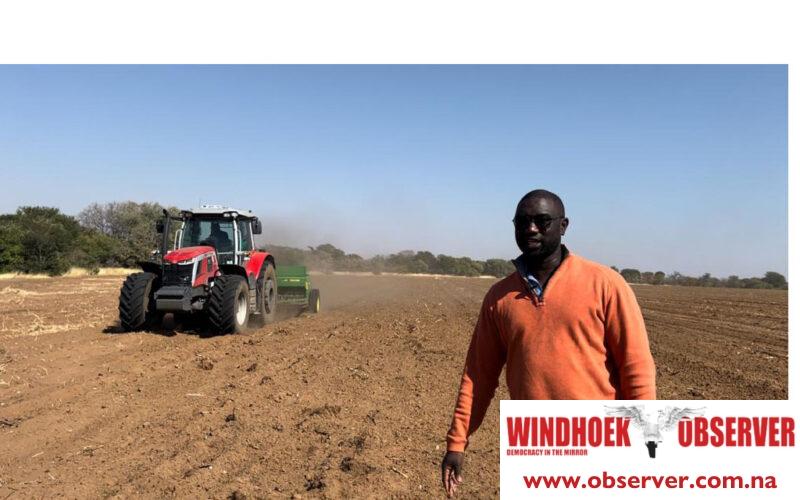Ester Mbathera
The Etunda Green Scheme Irrigation Project has reported continuous production activities since the return of the Green Schemes to the Ministry of Agriculture, Water, and Land Reform (MAWLR) in 2022.
The farm manager, Sacky Shilyomunhu, and his team last week started with the final harvest of 180 hectares of maize and are simultaneously planting 210 hectares of wheat.
“We are currently busy with the harvesting of maize that we planted in the summer,” said Shilyomunhu.
He said that out of the 180 hectares planted at the beginning of the year, they have so far harvested 120 hectares.
“We still have 160 hectares remaining to harvest, with yields averaging seven tonnes per hectare. The harvested maize is processed, milled, and packaged on-site. We have 50 kg, 20 kg, and 10 kg bags that we sell locally and in other regions,” Shilyomunhu explained.
According to him, the farm also participates in government tenders to distribute its products.
The team is planting 210 hectares of wheat in parallel, with harvesting anticipated in October or November.
“Currently, we are busy with the planting of wheat. This is one of the fields that we are working in, and we anticipate that come October or November, we will be harvesting,” said Shilyomunhu.
The process involves fertigation, which uses water-soluble fertilizers applied through irrigation.
The ministry recently acquired a new 30-hectare centre pivot irrigation machine for growing wheat.
“This is one of the new machines that we received from the ministry. It is brand new, and this is the first season it’s working. It’s doing very well,” Shilyomunhu said.
The Etunda Green Scheme has also introduced a hydroponic fodder production system, established by the Prime Minister’s office.
Shilyomunu explains that the system produces fodder for livestock within seven days.
“This is a tray that we produce in only seven days,” Shilyomunhu explained.
Each unit can support 15 livestock animals, providing 5 kg of fodder per animal per day and 2 kg per day for smaller stock such as cattle, sheep, and goats.




